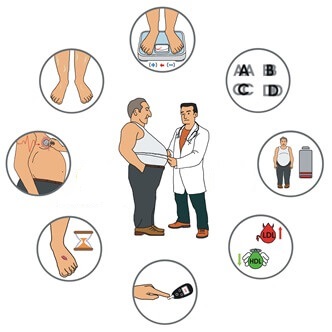See details
READ MORE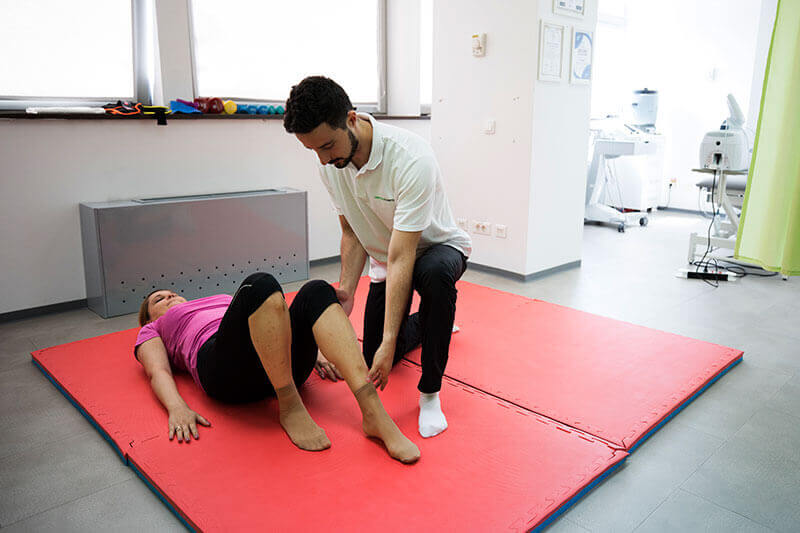
Recovery protocol after MPFL reconstruction
Surgical treatment consists of suturing the internal femur-patellar ligament (arthroscopic) or reconstruction with autograft, allograft (graft attached with femoral screws and with resorbable anchors on the patella). The function of the ligament is to prevent the lateral slip of the patella in the first 30 degrees of flexion. The cause of the rupture of the patellofemoral medial ligament can be either traumatic or atraumatic.General postoperative advice:
- Avoid loading with the knee in the valgus and the hip in internal rotation.
- Postoperatively, it is recommended to immobilize the knee in extension (48-72 hours). With the recovery of the femoral quadriceps, an orthosis is used that immobilizes the patella.
- The total extension is reached shortly after the operation, instead, the flexion is limited by pain.
- MPFL reconstruction leads postoperatively to atrophy of the quadriceps femoris, so its recovery is extremely important and must be done carefully without damaging the graft.
- Muscle electrostimulation is recommended.
- Physiotherapy is recommended postoperatively for 6-12 months.
- The resumption of sports activities is expected postoperatively at 6-12 months.
- Ice therapy is recommended not only in the immediate phase of surgery but also symptomatically (post-recovery activity). Ice 5 times a day, respectively 20 minutes every hour.
The recovery protocol has 4 phases:
Phase I
Represents the initial postoperative phase and lasts 1-3 weeks. In the first postoperative week, total rest is recommended, the prone position of the knee is in extension, the ice is local. During all this time, you will wear an orthosis on the operated limb, which must stay on even during sleep. The orthosis must be locked in extension for 72 hours, then you can allow flexion of 30 degrees. Loading begins with crutches gradually, initially, you are not allowed to leave more than 50% of your body weight on the operated leg (loading depends on pain, inflammation, and recovery of the quadriceps). At the end of the 3 weeks, you need to reach a flexion of 60 degrees.Recommended exercises:
Flexion and plantar extension of the foot (patient lying on his back), 10-20 repetitions every hour.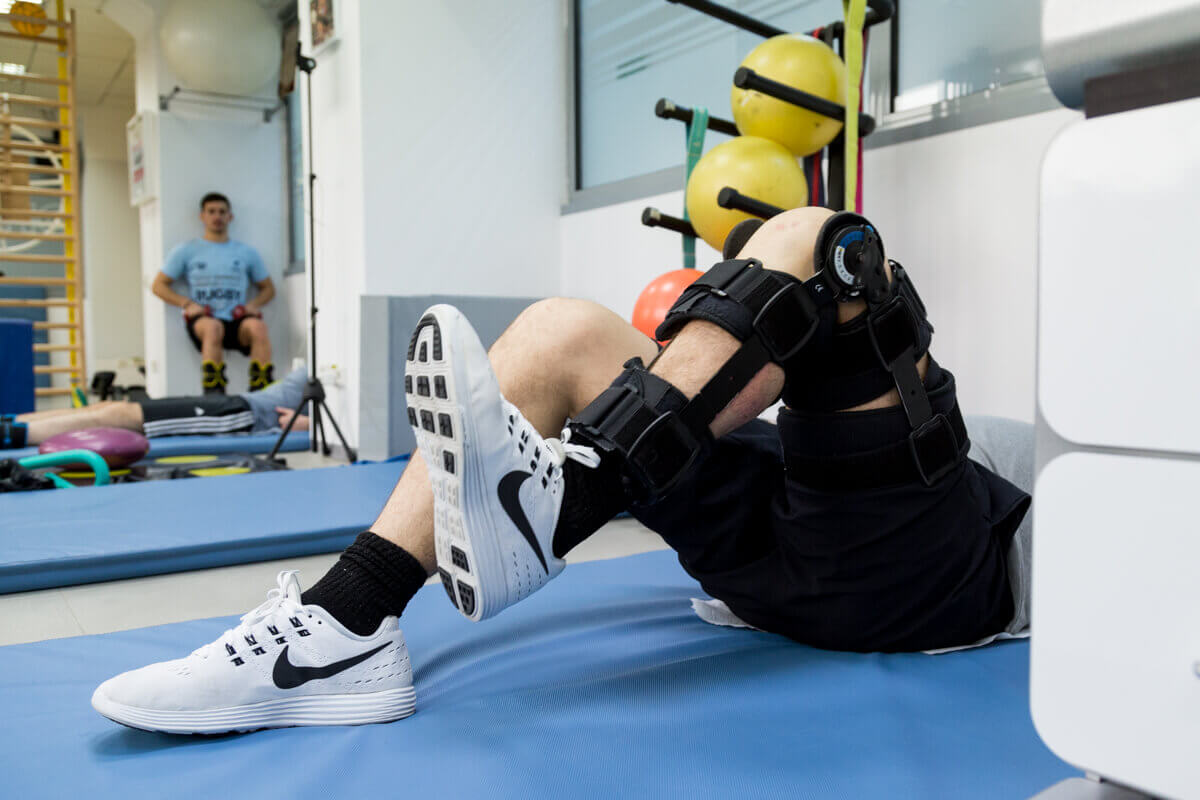
Knee extension (a roll placed at the ankle, posterior face). It starts with 2 minutes of passive extension then up to 5 minutes 2-3 times a day.
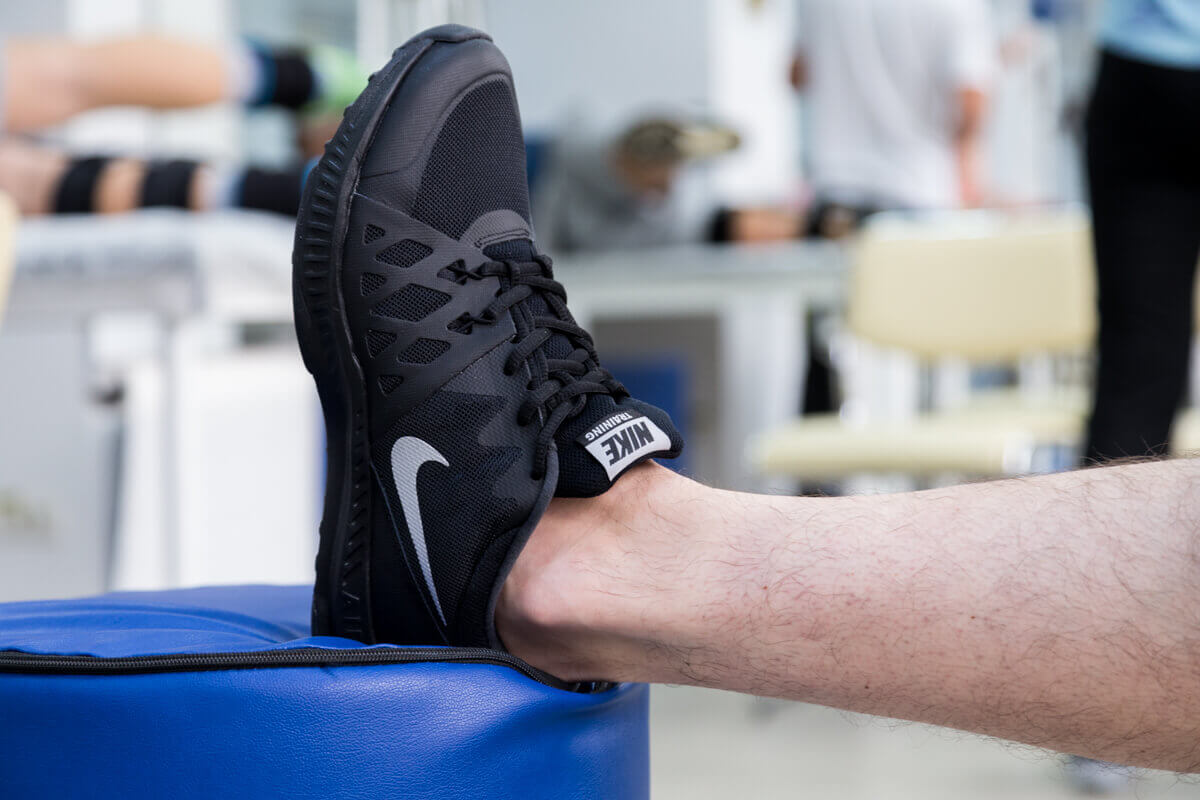
Quadriceps muscle contraction. With the knee extended, sitting, the patient contracts the quadriceps femoris 5-10 times holding the contraction for about 5 seconds. This exercise should evolve to 30 contractions of 10 seconds each with a 5-second break between contractions. The use of electro muscle stimulation is recommended for this exercise.

Adduction of the hip. The patient in supine position with the knees bent (at 30-45 degrees), must hold a ball between the knees (5 seconds, 5-10 repetitions). This exercise is recommended to evolve up to 30 repetitions with a contraction of 10-15 seconds and a break of 5 seconds. All these exercises should be done 2-3 times a day.
Phase II
It passes into the second phase of recovery when the level of pain allows the progression of exercises and when the total extension of the knee is reached and the flexion is equal to at least 60 degrees. Phase II lasts from the 4th to the 12th week.In this phase we follow:
- Fighting pain and inflammation
- Mobility range from 0 to 90 degrees must be reached by the sixth postoperative week
- Good quadriceps contraction
- Full load with knee orthosis. Full load without crutches must be reached at the end of this phase and is allowed when you have good control of the quadriceps muscle.
- Stationary bicycle in daily recovery
- Focus on quadriceps activity (using electrostimulation)
- The orthosis is removed at night, at 4-6 weeks. The hinged orthosis is replaced during the day with a kneecap fixing orthosis.
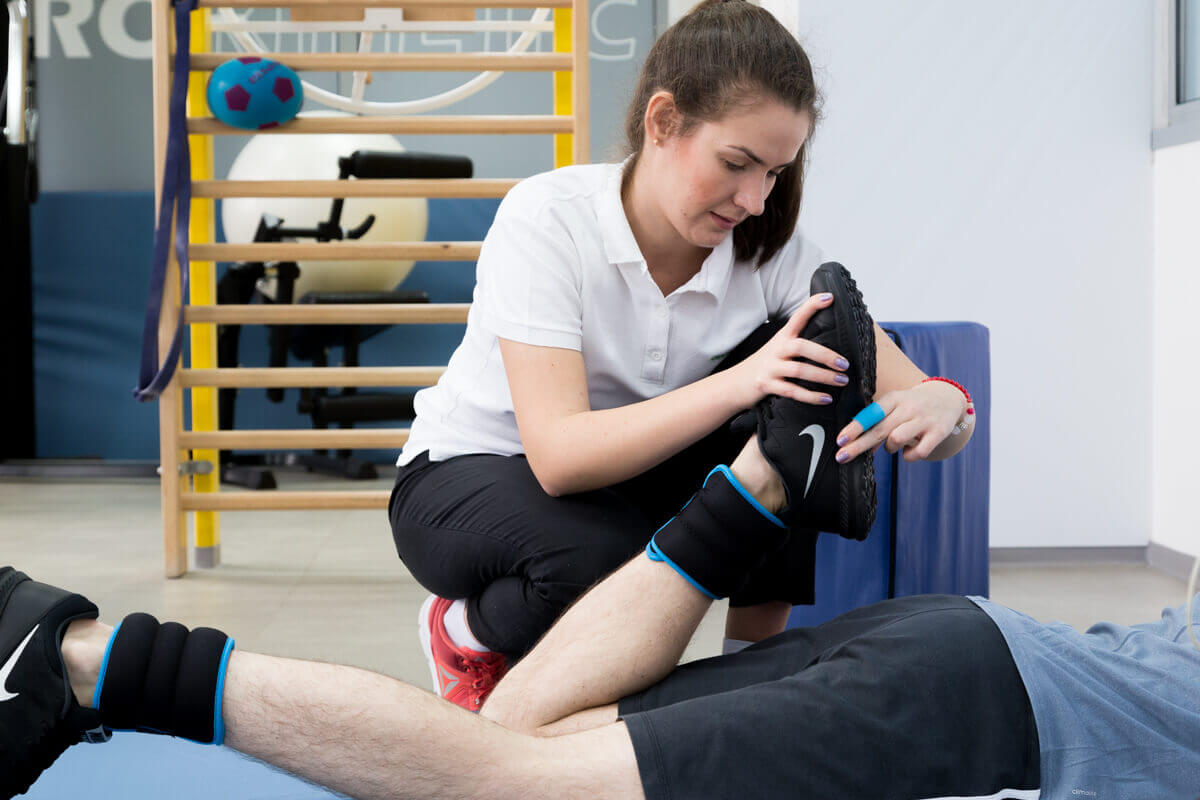
Exercises:
- Active progressive flexion assisted active and passive exercises
- Squats with 0-90 degrees flexion, 10 repetitions with maintaining flexion for 5 seconds (progressively increasing the number of repetitions up to 30 with 15 seconds maintaining in squat position). Make sure you do the exercises correctly.
- In a prone position, the patient flexes the knee, the ankle being attached to a fixed object by an elastic cord (to oppose the flexion resistance). It starts with 10 repetitions, up to 3 sets of 15 repetitions.
- In supine position, knees bent, close, hands next to the body, the patient lifts the pelvis 10 times maintaining this elevation 5 seconds (if the patient gets to do this exercise 20 times withholding 10 seconds then this exercise can be done with one-member support).
Phase III
Normally this phase lasts from week 13 to 18 (this phase can last up to 6 months).In the third phase, the following are pursued:
- Total mobility
- Walking without support with the use of patellar support
- Aerobics 20-30 minutes a day
- The immobilization of the patella is done only when activities with a high risk of injury follow.
Exercises:
- The mobility range is complete at this stage
- Initially, a chair is used as a support for moving the weight from one leg to another with the knee bent at 90 degrees. It starts with a set of 10 repetitions with 5 seconds holding, up to 30 repetitions with 15 seconds holding.
- Climbing a step (initially a set of 10 repetitions withholding for 5 seconds, then increasing the number of repetitions to 30 withholding for 15 seconds).
- The same exercise only as the patient goes down one step.
- You should not neglect the thigh and abdominal muscles. You need to include exercises designed to tone these muscles.
- You can practice long walks, jogging, cycling, swimming.
- You need to gain balance on the operated leg.

Phase IV
This phase begins at 3 months postoperatively at the earliest (usually at 18 weeks) and lasts up to 12 months. This phase follows the balance, the duration of the physical effort, specific sports trainings.Exercises:
- Lounges - at the beginning, 1 set of 10 repetitions withholding for 5 seconds, then 3 sets of 10 repetitions each.
- In one foot on a trampoline, the patient holds the position for 5 seconds (be careful not to get the knee in front of the toes).
- Successive jumps on the operated limb, in specified positions
- You must continue all the exercises presented above.
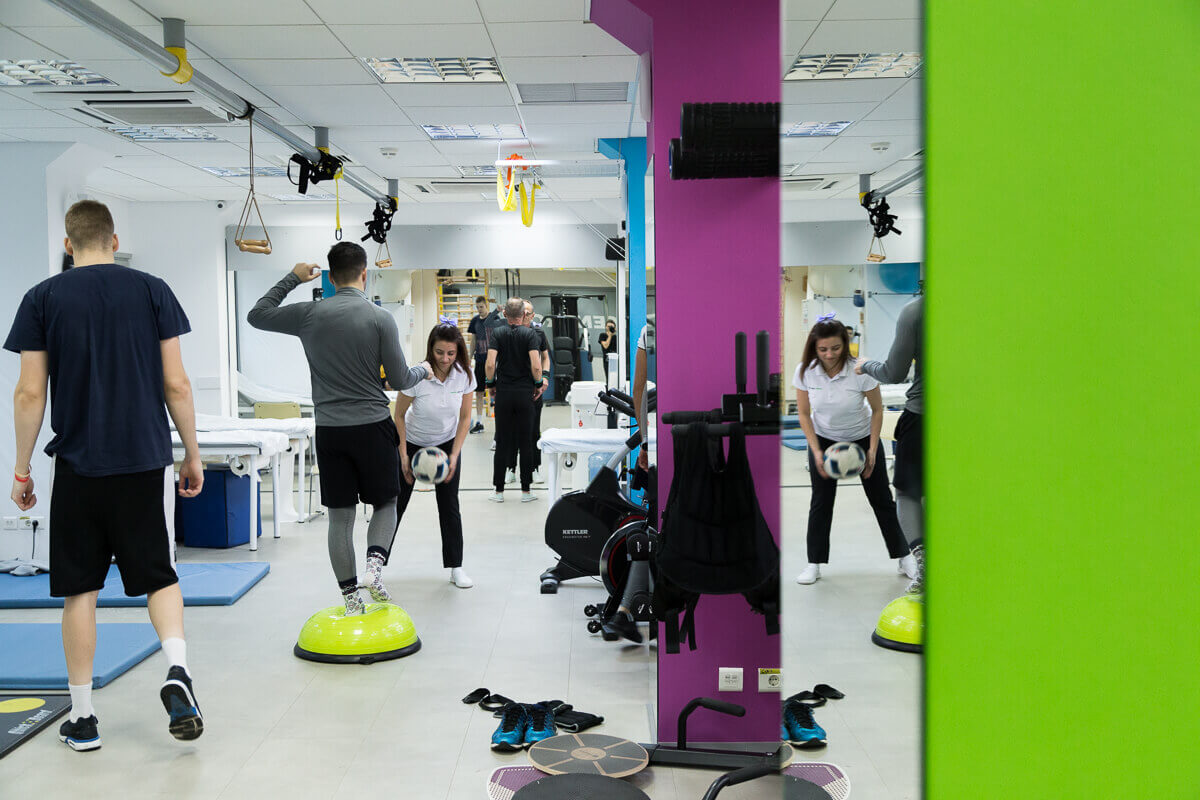

MAKE AN APPOINTMENT
CONTACT US
SUCCESSFUL RECOVERY STORIES
MAKE AN APPOINTMENT
FOR AN EXAMINATION
See here how you can make an appointment and the location of our clinics.
MAKE AN APPOINTMENT





